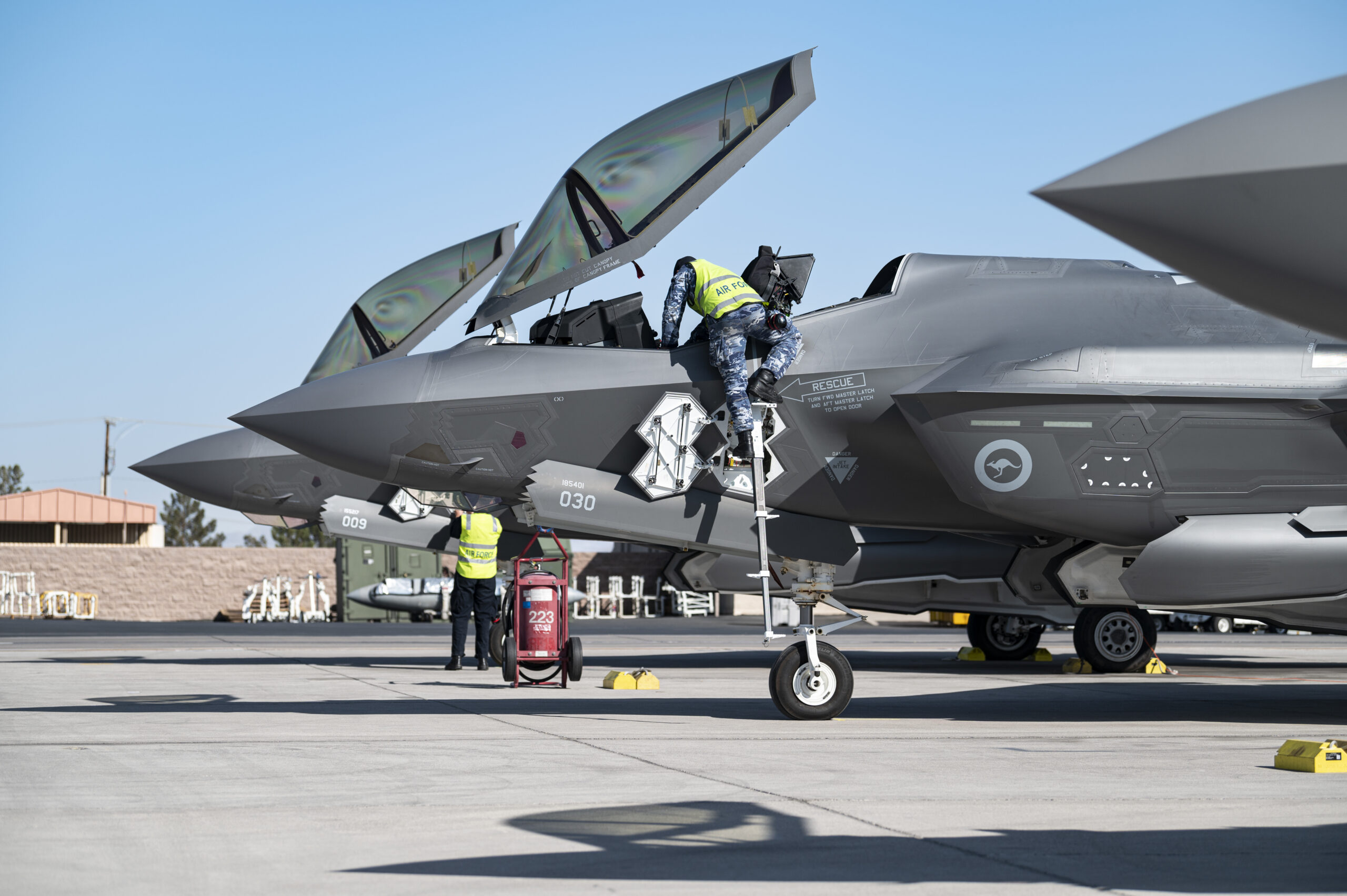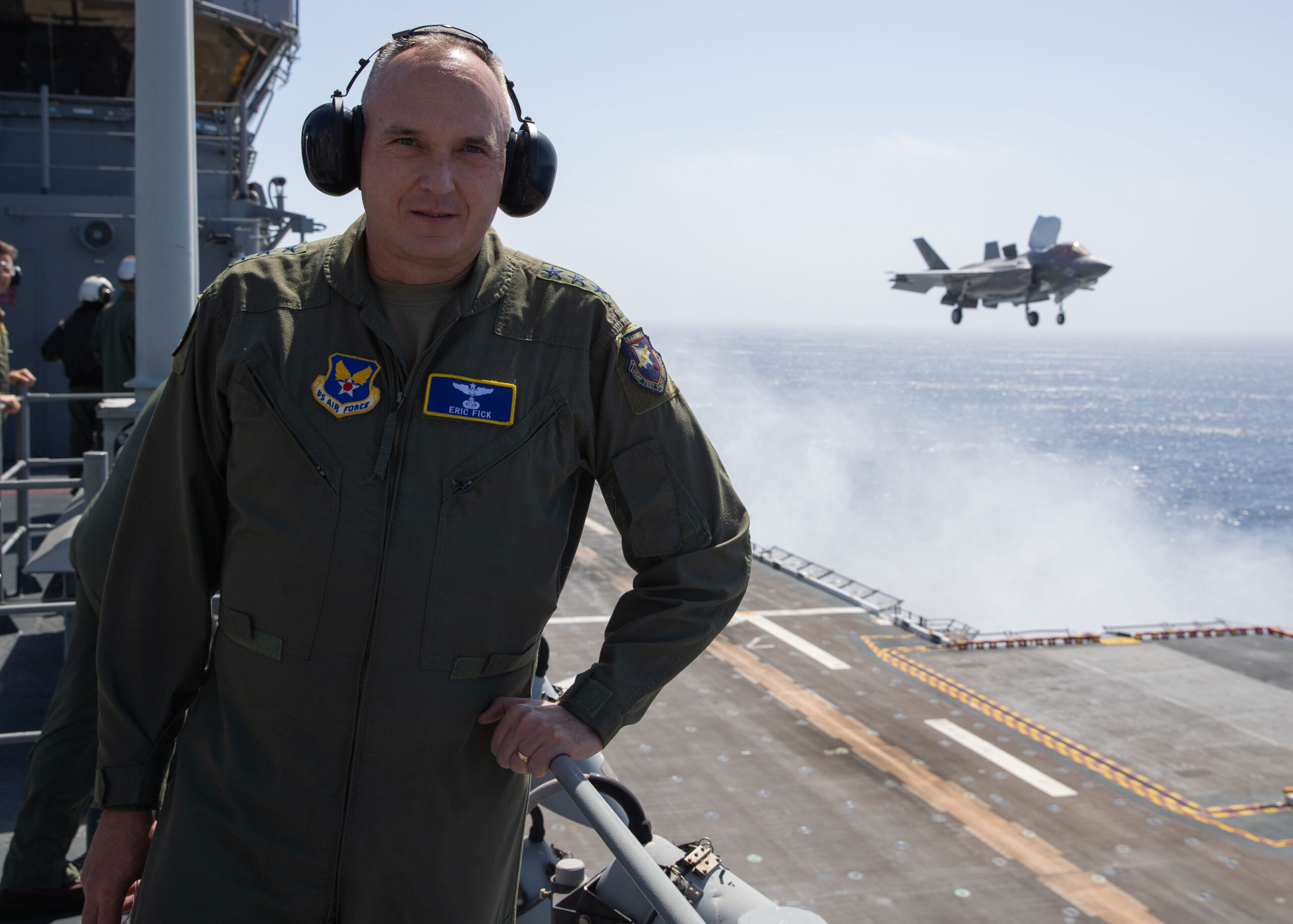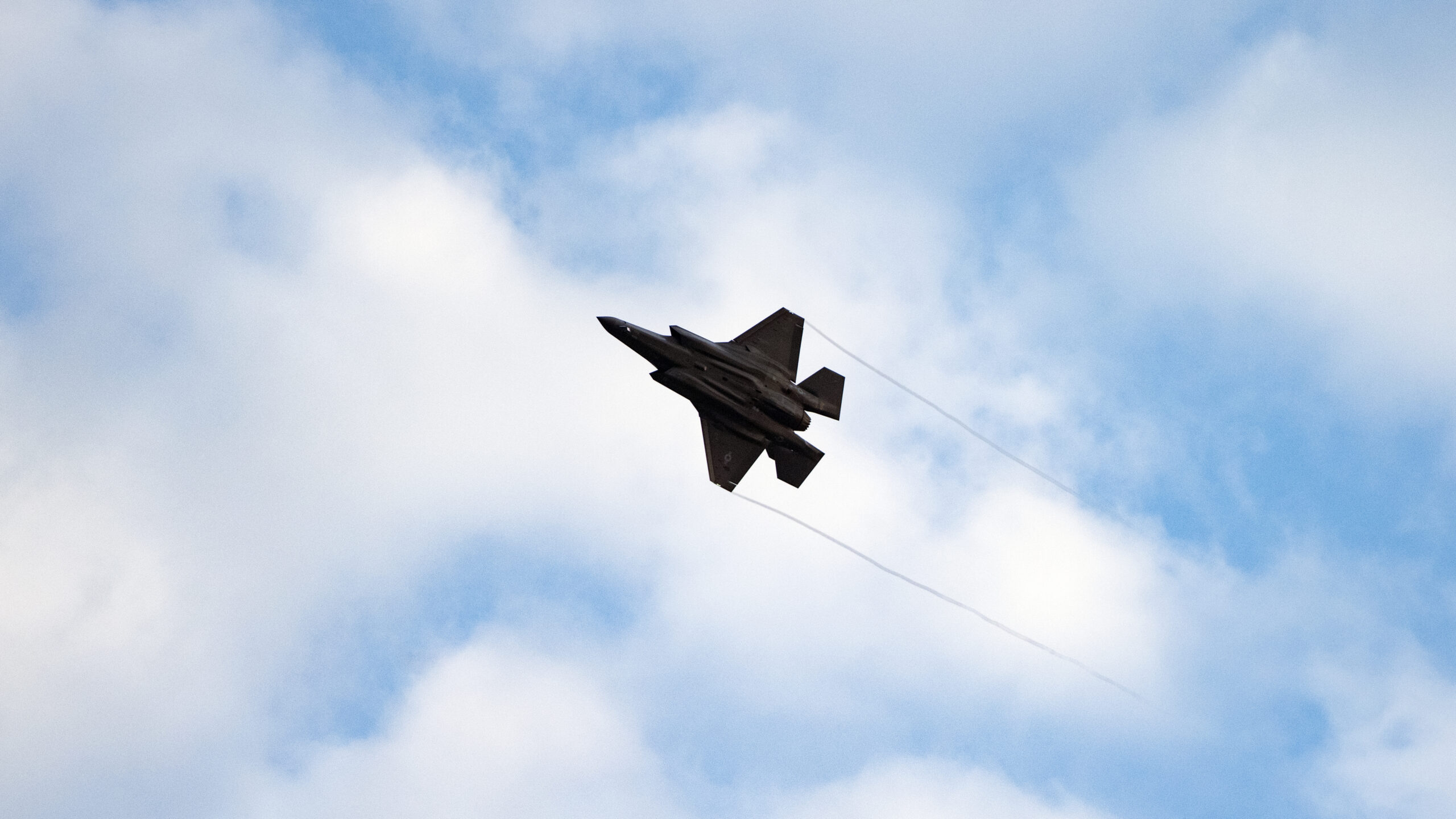Inspired by a dismal Government Accountability Office report on the F-35 Joint Strike Fighter‘s recent performance and maintainability, House Armed Service Subcommittee on Readiness Chairman John Garamendi, a Democrat from California, on April 28 vowed to “raise holy hell” until the program is brought back in line with operational requirements.
Air Force Lt. Gen. Eric Fick, head of the F-35 Joint Program Office, held his cool under fire and dutifully answered questions during the nearly two-hour hearing on Capitol Hill. Steven Morani, the acting assistant secretary of defense for sustainment, seemed more rattled by the pointed inquisition. Morani said 770 F-35s have been delivered to customers around the world as of last week.

The GAO report, released the same day as the hearing, can be found here.
It says that the F-35 continues to fall short of prescribed mission-capable rates, is consistently missing reliability targets and its maintenance costs have doubled. Across the board, the three variants in fiscal year 2021 did not meet the target for mission capable minimum performance by at least about 9 percentage points.
The F-35A in fiscal year 2021 was fully mission capable only half the time. The short-takeoff and vertical landing F-35B was fully mission capable less than 20 percent of the time, according to GAO. The Navy’s F-35C had an FMC rate of just 9.5 percent. Fick did point out that the F-35, even when running at a reduced capability is still superior to most other fighters, but GAO found none of the three variants were mission capable, meaning they are safe to fly and able to fly at least one tasked mission, more than 68 percent of the time in fiscal 2021. The minimum performance target for the F-35A is 80 percent and 75 percent for the other two variants.
Diana Maurer, director of the Defense Capabilities and Management Team at GAO was on hand to respond, but her sober recitation of what the report already laid out was eclipsed by representatives who seem to have had enough.
Highlights from the hearing follow the full video.

Bright, shiny airplanes
“I will not tolerate it any longer,” Garamendi said. “I’ve been watching the F-35 for a decade and it has not been solved. It has not gotten the attention necessary to sustain this 1.7 trillion dollar platform. It has not occurred, plain and simple. We’re going to go off and buy new bright shiny airplanes and they’re going to be flying probably well for a few months and then they’re going to wind up with a problem.”
What the hell, Pratt?
“A leading driver of the F-35 not being mission capable has been engine issues,” GAO found of the Pratt & Whitney F135 engine that powers all three versions of the jet. There was talk at the hearing about recompeting the engine contract with Pratt or perhaps going to a previous plan to also buy a General Electric engine and have two, but Garamendi said that likely would result in two engines that “don’t work.”
“Maybe the engine is not working, which is a Pratt & Whitney problem,” Garamendi said. “They’re going to be before this committee soon. If they’re in the audience and if they’re listening, watch out. I’m coming at you in a very angry mood. You give us an engine and it doesn’t work, well it worked for a little while until it gets some dust around and then it doesn’t work. What the hell? What’s going on here?”

Getting off on buying airplanes
“We’ve got a contractor out there — Lockheed — that would love to build new airplanes,” Garamendi continued in his opening remarks. “And I’ve got a lot of my colleagues that get off on buying new planes. This committee is responsible for making sure the planes are able to be flown and they’re not. The message for me, and I hope from my committee — and I know I’m going to raise hell in the full committee — is we’re not going to buy more planes until we figure out how to maintain them. It is a fool’s errand. It is a waste of money by the taxpayers. It’s a bright shiny machine until it doesn’t work.
Jumping up and down
“I know if I ask you about the engine you’re going to say that’s Pratt & Whitney’s problem. No, sir,” Garamendi went on to say. “Mr. Morani. Gen. Fick, the Air Force, all of you, it’s your problem. If you’re not jumping up and down on Pratt & Whitney about why they gave us an engine that works well until it doesn’t work — and that period is very very short — what’s going on here?”

What is anyone thinking?
“For the contractors out there what in the hell are you doing? Why can’t you give us a piece of equipment that actually works? You should never have a contract. And for Lockheed, you want a five-year maintenance contract? You can’t do what you’re doing today. Come on. What are we thinking? If I have not adequately expressed my frustration, I would assume that my frustration is less than the frustration of the pilots and the maintainers out there. … The primary maintenance responsibility on this is Lockheed and you gentlemen.”
Foolishness
Gen. Fick agreed with Garamendi’s “frustration likely pales in comparison to those that confront it every day as we work to make it better.” He then admitted regret over a plan launched two years ago to “flip the switch” from one incredibly complex maintenance and logistics system to another. The transition from the Autonomic Logistics Information System, or ALIS, the F-35’s supposedly universally available health and maintenance data system, to Operational Data Integrated Network, or ODIN, has been fraught, to say the least. The new plan is to go from one to the other like a “dimmer switch.”
“We were educated over time that that was a foolish way to proceed — switching from ALIS to ODIN with the flip of a switch two years ago,” Fick said. “I have a new material leader working ALIS.”
Garamendi: “If he fails, will he just get another promotion?”
Fick: “No.”

Swamps and alligators
Explaining that the F-35 program must first boost basic mission capable rates before tackling the more-daunting task of getting all three variants to full-mission-capable status, Fick shared a wild metaphor from his father.
“My dad used to say ‘When you are up to your neck in alligators, it’s hard to remember you’re there to drain the swamp,’” Fick said. “We have to do both. We have to kill the alligators and drain the swamp, which means that we have near-term degraders that we’re working on against mission-capable rates.”
Dragging the LCS
Rep. Jackie Speier, another Democrat from California, was up next. She began by trouncing one of the Navy’s boondoggle programs.
“This reminds me, on a much larger scale, of the debacle of the LCS,” Speier said, invoking the Littoral Combat Ship. “We are incapable of turning off the spigot when something doesn’t work. So, this is a $400 billion program to build them and a $1 trillion program to sustain them over the lifecycle. We’re asking the American people to pay for the F-35, only 55 percent of which are mission capable when the standard is 75 percent. Only about 30 to 35 percent of the F-35s are fully mission capable compared to a target of 60 percent and maintenance is taking twice as long as originally intended.”

Lockheed double-dipping
“We created a sustainment contract where we are not in charge and Lockheed Martin has the maintenance contract,” Speier said. “It’s a cash cow for them for the future. Since we have a record that maintenance costs are doubled and a record that we can’t keep those planes flying, how can we look the taxpayers in the face and say ‘Well, that’s the way it is,” and shrug our shoulders?”
Planes with holes in them
When Garamendi eventually launched a second round of questioning, he started back at Pratt.
“This committee needs to have a serious conversation with Pratt & Whitney,” he said. “That is a problem, planes with holes in them, in other words, no engines. … This is supposed to be the Super Plane, but there appear to be limits on what it can do because the engine may not be able to perform.”
Morani thinly stated that the current F135 engine “can meet the specifications for the aircraft” and will support an upcoming technology refresh 3, which includes a new core processor, radar, cockpit display and electronic warfare enhancements.
“If you’re going to tell me I’m wrong, this is a good one to tell me I’m wrong about,” Garamendi said.

Raising holy hell
“The problem of the F-35 is a shared problem,” Garamendi said in closing. “It’s a problem of the contractor — Lockheed Martin — and others. It is a problem of the Department of Defense not paying attention to sustainment. And it is a problem of this committee and the Senate wanting to buy new, bright shiny things and not pay much attention to the sustainment of what has been purchased. … If anybody out there is listening, any of my colleagues are listening, I’m going to raise holy hell about what we have failed to do.”
In thanking the witnessing for their testimony under fire, Garamendi said “we’ve made progress. This whole system has made progress. Insufficient, but nonetheless progress.”
Lockheed and Pratt officials should prepare for some very uncomfortable hearings in their futures. Garamendi requested a series of regular informal briefings on the program’s progress before the next such hearing occurs with next year’s budget cycle.
He faces reelection between now and then, but even if not reelected whoever sits in Garamendi’s seat will likely share the same views.
The Air Force’s 2023 budget proposal sees the retirement of a large number of existing fighter aircraft and a major cut to the F-15EX program, with the F-35 fleet becoming the backbone of the USAF’s tactical jet fleet for many years to come. The Marine Corps has just shy of 100 F/A-18 Hornets that will be asked to soldier on for a decade longer, the rest of its tactical jet fleet will be F-35s. The Navy, on the other hand, is less dependent on the F-35, with the Super Hornet remaining the mainstay of its tactical jet fleet into the next decade, but it is becoming a central component of its air wings.
So, the F-35 has to work with some efficiency and reliability, so much has been bet on it that the current availability rates and sustainment issues cannot just become business as usual. Hence the great concern witnessed in this hearing.
Time will tell if the F-35 can kick its vexing issues and at what cost, but for now, there is still a lot of progress to be made as it creeps towards the 20-year mark since its first flight.
Contact the author: Dan@thewarzone.com
